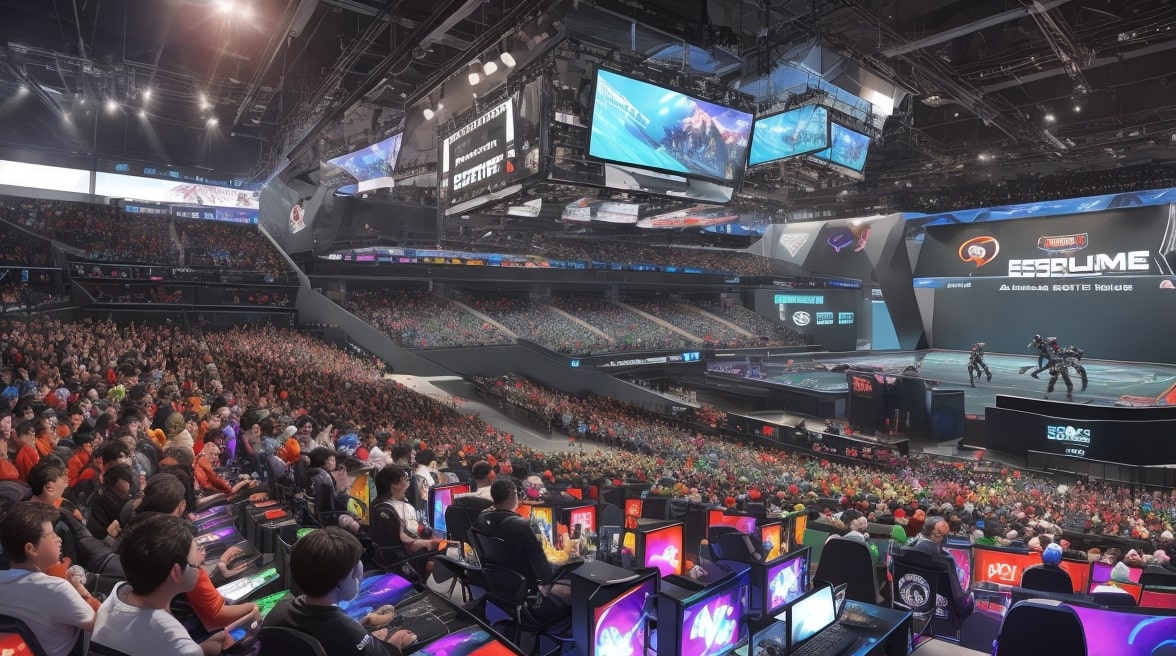Esports’ Development: From Speciality to Mainstream
First of all, The Esports Gaming Revolution:
In recent decades, competitive video gaming, occasionally referred to as esports, has experienced substantial transformations. Originally a specialist hobby, it has become a worldwide phenomenon with millions of followers and significant financial outlays. This article examines the evolution of esports from unauthorized contests to general acceptance and its impact on business, technology, and culture.
The earliest years: Competitive Gaming’s inception
The History of Competitive Video Games
Competitive gaming has existed since the early 1970s. In 1972, students at Stanford University participated in the first-ever video game competition, Spacewar! event. This event created the foundation for what would eventually grow to be a booming industry.
The Development of Video Game Culture
Arcade classics like Pac-Man, Donkey Kong, and Space Invaders sprang to fame in the late 1970s and early 1980s. In addition to providing entertainment, these games spurred interest in competitive play, leading to local arcades holding tournaments that attracted players and media attention.
The Nineties: The Inception of Internet Gaming
The Internet’s debut
The Internet era began in the 1990s, completely changing how consumers accessed and played video games. With the introduction of titles like Doom and Quake, which had multiplayer features enabling users to connect and compete online, online gaming started to take shape.
The Growth of LAN Events
Local area network (LAN) parties gained popularity throughout this decade. They brought gamers together in one location to participate in multiplayer games. These events created a competitive and supportive atmosphere, setting the stage for upcoming esports competitions.
The 2000s: Esports’ Development
The Beginning of the Professional Gaming Industry
With advancements in internet infrastructure, competitive gaming started to acquire credibility. Professional gaming leagues and tournaments began to appear in the early 2000s. With the ability to earn sponsorships and prizes, games like Warcraft III, Counter-Strike, and StarCraft established themselves as mainstays of competitive play.
The Part Cybercafés Play
Cybercafés were a significant factor in the rise in popularity of esports in nations like South Korea. These places offered competitive gaming as well as high-speed internet connectivity. Events like the StarCraft leagues in South Korea have proven to be successful competition hosts, indicating that esports have the potential to gain widespread recognition.
2010s: Esports Becomes the Main Event
The Development of Major Competitions
Esports grew exponentially in popularity in the 2010s, drawing large international audiences to critical competitions. An annual highlight, the League of Legends World Championship, The Evolution Championship Series (EVO), and The International for Dota 2 drew millions of people online and off.
Streaming Platforms’ Ascent
The introduction of streaming services like Mixer, Twitch, and YouTube Gaming completely changed how esports fans interacted with the sport. Fans could watch their favourite players and teams in real-time thanks to these platforms, which offered a space for live streaming of matches. Streaming became extremely popular, and some streamers became well-known celebrities.
Esports as a Mainstream Entertainment Sector in the 2020s
The Assimilation into Mainstream Media
By the 2020s, esports had become a well-known part of the mainstream entertainment landscape. Traditional sports organizations started investing in esports franchises, and major sports networks like ESPN started airing esports competitions. By forming alliances with esports organizations, the NFL, NBA, and other sports leagues gave the sector even more legitimacy.
Effects of COVID-19
The COVID-19 epidemic caused traditional sports to be cancelled or postponed, which in turn caused esports to flourish faster. Online formats were used for esports events, and many tournaments saw record-breaking viewership. The epidemic demonstrated esports’ capacity to adjust and thrive in trying situations.
The Esports Industry
Advertising and Sponsorship
Major sponsors and brands have made significant investments in esports. Corporations like Intel, Red Bull, and Coca-Cola have formed partnerships with teams and events to take advantage of the large and active audience within the esports sector. For esports organizations, sponsorship deals have become an essential income source supporting their expansion and long-term viability.
The Development of Esports Associations
Esports groups like Cloud9, Fnatic, and Team Liquid have grown from local teams to international corporations. These groups work on player development, marketing, and brand collaborations in addition to participating in competitions. Their professionalization has dramatically aided the sector’s development.
Esports Gaming Future
Technological Progress
Technological developments are still shaping the direction of esports. AI, VR, and AR developments are improving games and creating new opportunities for interaction and competition. These technologies are anticipated to be crucial to the development of esports.
Increasing Global Presence
Esports have become a global phenomenon, with a fan base expanding outside a small area. Participation and viewership are surging in emerging regions of Latin America, Africa, and Asia. Esports’ global reach offers opportunities for development and cross-cultural interaction.
In summary:
Esports: A Powerhouse of Culture and Economy
Esports has grown from its modest origins in college dorm rooms and cybercafés to become a significant cultural and economic force. The rise of gaming from a specialized pastime to a global phenomenon is evidence of the creativity and enthusiasm of players everywhere. The future of esports seems bright, promising even more significant development and influence as new generations of players and fans emerge and technology advances.












Leave a Reply